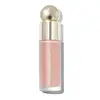What's inside
What's inside
 Key Ingredients
Key Ingredients

 Benefits
Benefits

 Concerns
Concerns

 Ingredients Side-by-side
Ingredients Side-by-side

Isododecane
EmollientSilica
AbrasiveDimethicone
EmollientMethyl Trimethicone
Skin ConditioningDiisostearyl Malate
EmollientTrimethylsiloxysilicate
EmollientDiphenyl Dimethicone
EmollientMica
Cosmetic ColorantCera Microcristallina
Emulsion StabilisingSilica Silylate
EmollientDisteardimonium Hectorite
StabilisingC30-45 Alkyl Dimethicone
Skin ConditioningDimethicone/Vinyl Dimethicone Crosspolymer
Skin ConditioningSorbitan Isostearate
EmulsifyingPropylene Carbonate
SolventPhenoxyethanol
PreservativeCaprylyl Glycol
Emollient1,2-Hexanediol
Skin ConditioningPropanediol
SolventHelianthus Annuus Seed Oil
EmollientIllicium Verum Fruit Extract
PerfumingGardenia Florida Fruit Extract
Skin ConditioningNelumbo Nucifera Flower Extract
Skin ConditioningNymphaea Odorata Root Extract
RefreshingCI 77891
Cosmetic ColorantCI 45410
Cosmetic ColorantCI 15985
Cosmetic ColorantCI 77491
Cosmetic ColorantCI 77499
Cosmetic ColorantCI 15850
Cosmetic ColorantIsododecane, Silica, Dimethicone, Methyl Trimethicone, Diisostearyl Malate, Trimethylsiloxysilicate, Diphenyl Dimethicone, Mica, Cera Microcristallina, Silica Silylate, Disteardimonium Hectorite, C30-45 Alkyl Dimethicone, Dimethicone/Vinyl Dimethicone Crosspolymer, Sorbitan Isostearate, Propylene Carbonate, Phenoxyethanol, Caprylyl Glycol, 1,2-Hexanediol, Propanediol, Helianthus Annuus Seed Oil, Illicium Verum Fruit Extract, Gardenia Florida Fruit Extract, Nelumbo Nucifera Flower Extract, Nymphaea Odorata Root Extract, CI 77891, CI 45410, CI 15985, CI 77491, CI 77499, CI 15850
Water
Skin ConditioningCyclopentasiloxane
EmollientMethyl Trimethicone
Skin ConditioningMica
Cosmetic ColorantButylene Glycol
HumectantPEG-10 Dimethicone
Skin ConditioningDicaprylyl Carbonate
EmollientNeopentyl Glycol Diheptanoate
EmollientDisteardimonium Hectorite
StabilisingGlycerin
HumectantVinyl Dimethicone/Methicone Silsesquioxane Crosspolymer
Sorbitan Isostearate
EmulsifyingSoluble Collagen
HumectantEthylhexylglycerin
Skin ConditioningMagnesium Sulfate
Dimethicone/Vinyl Dimethicone Crosspolymer
Skin ConditioningMethyl Methacrylate Crosspolymer
Triethoxycaprylylsilane
Disodium EDTA
Polyglyceryl-2 Triisostearate
EmulsifyingPentylene Glycol
Skin ConditioningPhenoxyethanol
PreservativeSilica
AbrasiveAluminum Hydroxide
EmollientTin Oxide
AbrasiveCI 77891
Cosmetic ColorantCI 77492
Cosmetic ColorantCI 75470
Cosmetic ColorantCI 77007
Cosmetic ColorantCI 77742
Cosmetic ColorantCI 15850
Cosmetic ColorantCI 73360
Cosmetic ColorantWater, Cyclopentasiloxane, Methyl Trimethicone, Mica, Butylene Glycol, PEG-10 Dimethicone, Dicaprylyl Carbonate, Neopentyl Glycol Diheptanoate, Disteardimonium Hectorite, Glycerin, Vinyl Dimethicone/Methicone Silsesquioxane Crosspolymer, Sorbitan Isostearate, Soluble Collagen, Ethylhexylglycerin, Magnesium Sulfate, Dimethicone/Vinyl Dimethicone Crosspolymer, Methyl Methacrylate Crosspolymer, Triethoxycaprylylsilane, Disodium EDTA, Polyglyceryl-2 Triisostearate, Pentylene Glycol, Phenoxyethanol, Silica, Aluminum Hydroxide, Tin Oxide, CI 77891, CI 77492, CI 75470, CI 77007, CI 77742, CI 15850, CI 73360
 Reviews
Reviews

Ingredients Explained
These ingredients are found in both products.
Ingredients higher up in an ingredient list are typically present in a larger amount.
Ci 15850 is the pigment color red. It is an azo dye and created synthetically.
Azo dyes need to be thoroughly purified before use. This allows them to be more stable and longer-lasting.
This ingredient is common in foundations, lipsticks, and blushes. This color is described as brown/orangey red.
It has many secondary names such as Red 6 and Red 7. According to a manufacturer, Red 6 usually contains aluminum.
Learn more about CI 15850Ci 77891 is a white pigment from Titanium dioxide. It is naturally found in minerals such as rutile and ilmenite.
It's main function is to add a white color to cosmetics. It can also be mixed with other colors to create different shades.
Ci 77891 is commonly found in sunscreens due to its ability to block UV rays.
Learn more about CI 77891This ingredient is a silicone used to improve the texture of products and absorb oil. It does not get absorbed into the skin.
Like other silicones, Dimethicone/Vinyl Dimethicone Crosspolymer helps condition the skin by creating a barrier. In this sense, it can act as an emollient and trap moisture in.
This ingredient is a type of elastomer.
Learn more about Dimethicone/Vinyl Dimethicone CrosspolymerDisteardimonium Hectorite comes from the clay mineral named hectorite. It is used to add thickness to a product.
It can also help stabilize a product by helping to disperse other ingredients.
Hectorite is a rare, white clay mineral.
Learn more about Disteardimonium HectoriteMethyl Trimethicone is a type of silicone. It is a solvent and emulsifier.
Solvents are used to keep ingredients together in a product. They can help dissolve ingredients to stable bases or help evenly distribute ingredients throughout the product.
Emulsifiers help stabilize a product. It does this by preventing certain ingredients from separating.
Methyl Trimethicone does not get absorbed into the skin.
Learn more about Methyl TrimethiconeMica is a naturally occurring mineral used to add shimmer and color in cosmetics. It can also help improve the texture of a product or give it an opaque, white/silver color.
Serecite is the name for very fine but ragged grains of mica.
This ingredient is often coated with metal oxides like titanium dioxide. Trace amounts of heavy metals may be found in mica, but these metals are not harmful in our personal products.
Mica has been used since prehistoric times throughout the world. Ancient Egyptian, Indian, Greek, Roman, Aztec, and Chinese civilizations have used mica.
Learn more about MicaPhenoxyethanol is a preservative that has germicide, antimicrobial, and aromatic properties. Studies show that phenoxyethanol can prevent microbial growth. By itself, it has a scent that is similar to that of a rose.
It's often used in formulations along with Caprylyl Glycol to preserve the shelf life of products.
Silica, also known as silicon dioxide, is a naturally occurring mineral. It is used as a fine, spherical, and porous powder in cosmetics.
Though it has exfoliant properties, the function of silica varies depending on the product.
The unique structure of silica enhances the spreadability and adds smoothness, making it a great texture enhancer.
It is also used as an active carrier, emulsifier, and mattifier due to its ability to absorb excess oil.
In some products, tiny microneedles called spicules are made from silica or hydrolyzed sponge. When you rub them in, they lightly polish away dead skin layers and enhance the penetration of active ingredients.
Learn more about SilicaSorbitan Isostearate is an emulsifer and cleaning agent. It is created from isostearic acid and sorbitol.
As an emulsifier, Sorbitan Isostearate prevents oils and water from separating.
Due to its isostearic acid base, it may not be safe for Malassezia or fungal acne.
Learn more about Sorbitan Isostearate